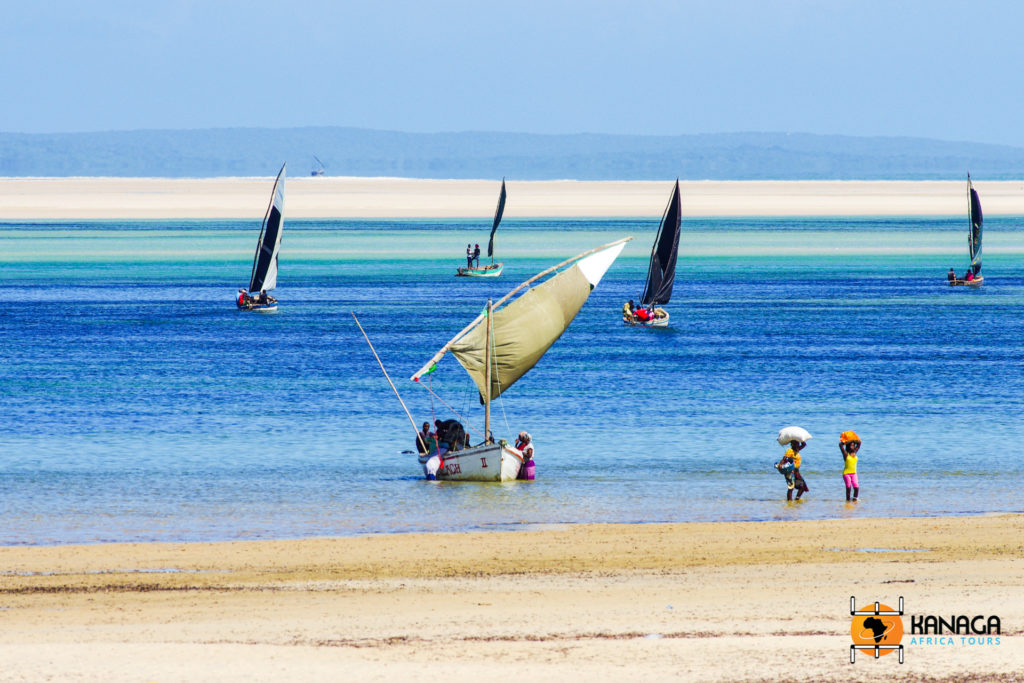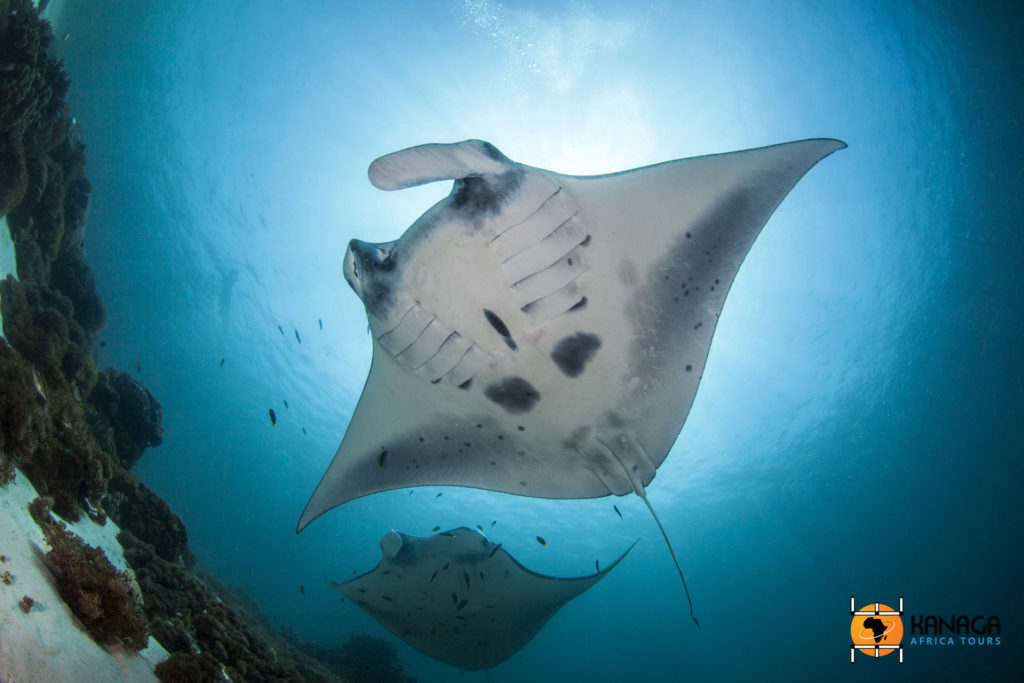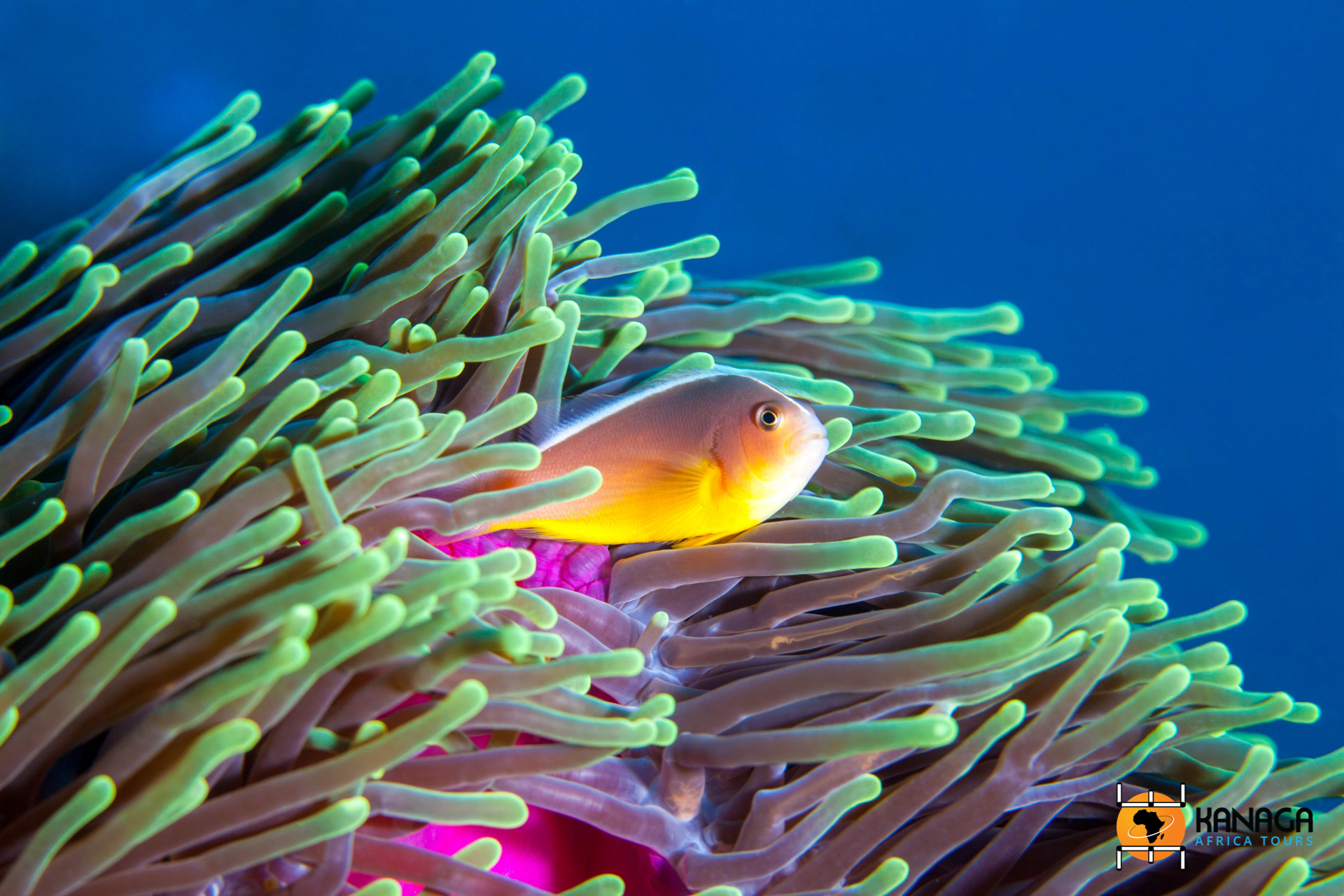Inhambane, an ancient textile centre and a port for ivory and slaves, has now the atmosphere of a typical Mozambican town, where its historic past as a trading port for Arab merchants and later as a Portuguese strategic outpost quietly resurfaces.
The sleepy town is one of Mozambique’s most charming, whose many cultural influences also bring back distant echoes of the Indies route. But its fame today is mainly due to its geographical location overlooking one of the most spectacular bays in the Indian Ocean, amidst vast expanses of white beaches, mangrove swamps, coconut palm forests and one of the most colourful seabeds on the Mozambican coastline, which attracts thousands of visitors from all over the world every year.
While Inhambane remains suspended in its decadence as an old colonial settlement, the village of Tofo is bursting with festive life, accommodation facilities and a bustle of people ready to discover, with mask and snorkel, the surprising underwater riches. Dhows and speedboats dot the bay, which is teeming with humpback whales, whale sharks, dugongs, dolphins, manta rays and an impressive variety of tropical fish and seabirds, off the monumental coral reef.
Heading further north up the coast to the small village of Vilankulo, between the beautiful beaches with their blinding colours and the blue horizon, one of Mozambique’s undisputed pearls appears, the Bazaruto Archipelago and National Park.
The five islands (Bazaruto, Benguerra, Magaruque, Santa Carolina and Bangwe), surrounded by sandbanks, protect the mainland from the currents of the open sea, creating a channel of crystal clear waters that hosts one of the most spectacular seascapes in the country.
Bazaruto Island, the largest, and Benguerra Island, are characterised by a cordon of dunes, similar to a small desert in the middle of the sea, while the leeward area explodes with vegetation that welcomes families of primates, gazelles, and colonies of crocodiles that live in the small inland lakes, bearing witness to the fact that thousands of years ago, these islands were joined to the mainland. Smaller islands are Magaruque Island and Santa Carolina Island, also called “Paradise Island” (a name, a guarantee!), totally uninhabited among its ruins of colonial buildings, while Bangwe appears as a lost sandy atoll in the middle of the sea.
The main visual charm of these islands is concentrated in the incredible colour nuances on the surface and on the seabed. From the golden yellow of the dunes to the green of the dense vegetation and mangroves, from the crystal-clear turquoise of the shoreline, tinged with the snowy white of the sandbanks emerging from the shallow waters, to the blue of the sea fading into cobalt blue on the horizon, punctuated by the white sails of the dhows that sail one of the richest seas in the Indian Ocean. Dolphins, whales, tropical fish, turtles, dugongs, myriads of flamingos and fish eagles, coral reefs (called “Two Miles Reef”) in which a colourful underwater life hides.
A paradise on earth and water that is worth a trip to Mozambique.







